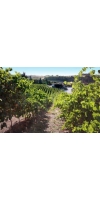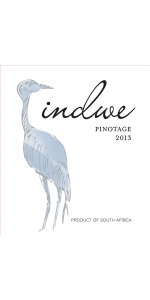Wine from Elim

Elim translates to, “Place of God,” and is a wine ward located in the Cape Agulhas region, and is the southernmost on the Western Cape. Elim is at the meeting point of the warmer Indian Ocean, and the cold Atlantic Ocean. Wine connoisseurs claim that it is the climate that makes the wine so good in Elim. Elim is located 20 kilometers from Agulhas.
German Moravian missionaries planted the first vines in 1842, as they needed wine for communion. The cool breezes from the south-west and southeast meet on the vineyards helping to prolong the growing season. Because of the gradual ripening process, the grapes are given plenty of fruity characters. Planting in the region ended over one hundred years ago, but resumed in 1997.
Elim has a variety of soils that include weathered shale, and laterite and sandstone that help contribute to the intensity and quality of the wines. The terroir in Elim is best suited for Sauvignon Blanc; however, the late and long ripening season is excellent for red grapes like Shiraz and Cabernet Sauvignon. There are several fresh water springs in Elim that leads to speculation of a huge underground lake underneath the coastal shelf.
Indwe Pinotage Coastal Region is made from 100 percent Pinotage.
Pinotage is a true South African grape variety, Our signature grape smilar to the Blue Crane being our national bird. Indwe Pinotage grapes are meticulously sourced from our grape producers along the Coastal region of the Western Cape ensuring complexity, depth and purity of fruit. The wine is layered with sweet cherry notes, and subtle hints of mocha and vanilla flavors.
- back
Selected Options
Regions
Categories
Pricing
Countries
Regions
Grape Types
Wineries
Organic/Free Shipping
J. Lohr Hilltop Cabernet Sauvignon is made from 94% Cabernet Sauvignon, 3% Petit Verdot, 2% Malbec, 1% Cabernet Franc.
Displays blackberry and blueberry compote aromas garnished with crushed violet, cracked pepper, and black tea. Plump fruit on the palate with fine-grained tannins. Juicy layers of black and red currants lead to a bright finish accented by pastry notes from the 16 months aging in French cooperage.
-Tasting Panel 94 Points
-Wine Enthusiast 94 Points
Manoir du Carra Bistrot Beaujolais-Villages is made from 100 percent Gamay.
From Granitic and sandy soils, the Beaujolais-Villages Carra Bistrot exhibits intense color, with hints of cherry and garnet, and to reveal aromas of red fruit dominated by cassis and strawberry. This Cuvée was specially made for the Parisian Bistrots willing to offer easy drinking wines, with enough body to withstand local Cuisine from the Beaujolais region.
Produced from a selection of old vines (50-70 years old). Manual harvest; selection of the best grapes using a sorting table; semi-carbonic maceration for 10-12 days. No filtration. Egg white fining.
Great with coq au vin (Chicken cooked in a red wine sauce) or charcuterie (garlic sausage, dry sausage).





